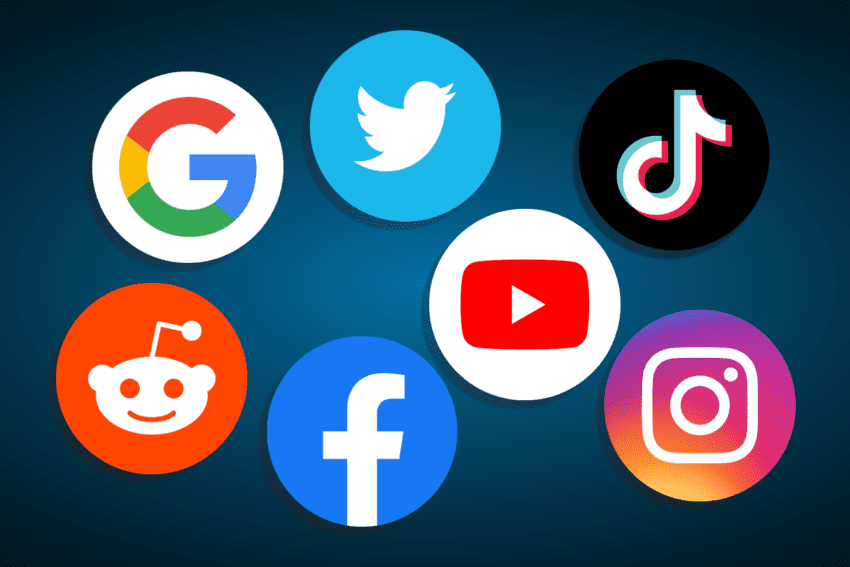The following is the forward from Amberly Rothfield's soon-to-be-published book Get on Top, Stay on Top: Navigating Changing Platforms Using Algorithms. As an online content creator of over eight years, I've used over twenty different websites and apps to host my content and sell my products and services, so Amberly asked me to share some general thoughts on adapting to brand new and constantly evolving algorithms.
We've all heard of these mysterious "algorithms.” They populate our timelines with interesting content, provide us with relevant search results, and even predict how we phrase our text messages. We praise them for connecting us with old contacts and blame them for spreading fake news, steering us through a ceaseless sea of knowledge, and fueling our internet addictions. Every website we visit and app that we use has its own set of algorithms, from YouTube autoplay lists to mobile game micro sales, designed to captivate and hold users’ attention (often for monetary gain).
At first glance, understanding an algorithm seems as abstruse as reading tea leaves: there are recognizable patterns, of course, but our predictions are seldom precisely accurate. But algorithms aren’t magical; they’re simply automated procedures, and yet without insider knowledge of the algorithm’s mechanics, we as users are left in a constant state of uncertainty. One day, our Instagram posts are getting thousands of likes and dozens of comments, and the next, the likes drop to the hundreds and none of our followers seem to care.
It’s maddening, isn’t it? I know I found it frustrating at first, but bit by bit over time, through observation and comparison, I came to realize that it’s just a game - a complicated, constantly evolving game - but a game nevertheless, and that game isn’t a reflection of me as a person. As independent content creators, our identities are intimately tied to our work. I don’t just make erotic entertainment; I am an erotic entertainer! My products and services are defined by my personality - albeit a curated version - and that public persona defines how I’m perceived. People want to support the sellers and public figures that they connect with, and in an age in which “realness” is valued above snazzy advertising, everyone from Etsy sellers to fast food chains puts a premium on genuineness and relatability to generate sales. The line between business and individual is intentionally blurred whether we recognize it or not, especially on social media, but staying in the mindset that you are what you make can take a devastating toll on your psyche, especially when you feel like you’re falling short of your goals.
Before combing through your stats and compiling your data, take a step back and try to disconnect your personal identity from your public persona. Even as an influencer or individual entertainer, you’re still running a business, and even the most popular, personable creators detach their offline lives from their online identities to have sustainable careers without burning out. Most of us enjoy what we make, but the ultimate goal is to make money. It’s the difference between a professional and a hobbyist.
Mass appeal isn't synonymous with monetary success. There will always be someone more popular than you, and that’s ok! Virality may boost your following, but catering to your niche by using sites’ algorithms as a tool will generate sustained income in the long run. Each niche follows different trends that, as content creators, we need to understand. Sponsors certainly recognize this! Ever notice how low-ad rev, 100k-follower true crime YouTube channels get paid to advertise detective games and horror-themed clothes shops? Sponsors know that investing in a concentrated, niche community of murder mystery fans will have a far greater return than paying PewDiePie or Jeffree Star to advertise regardless of their massive fanbases. Learn who is consuming your content and consider your target audience when making decisions about what to post, where to post, and when to post. An erotic model might get the most engagement on Twitter in the early morning and late evening while a prankster who caters to kids might get their best viewership in the late afternoon and early evening. But following patterns within your niche is just the start, and patterns vary between different people within the same industry. A dear friend of mine and fellow porn girl whose primary demographic is cis men ages 25-40 has noticed that tweets with two 4:5 photos get the most interactions, whereas for me - who shares the same primary demo - tweets with single photos get the most likes and comments regardless of image ratio. Why? I have no idea, but the key is figuring out what works for you, and figuring out what works requires collecting and analyzing data from your own accounts, not just following common trends.
When tracking data, consistency is key. That doesn't necessarily mean posting the same type of content every day at the exact same times, but when considering how to change your strategy, altering one factor at a time for several weeks will give you more insight than switching your entire approach all at once. But here’s the rub: what works for you can and will shift over time, and as content creators, we need to be able to adapt. Websites are constantly tweaking the algorithms, terms of service, and site structures, to encourage engagement, conform with societal pressures, and abide by new laws and public policies. Perhaps they’ve added a new feature to mimic another popular app (here’s looking at you, Instagram Reels!) and are prioritizing accounts who utilize the new feature, or maybe they’re trying to change public perception and are deprioritizing posts with undesirable hashtags to discourage certain users from using the app (here’s looking at you, Instagram prudes!). Some apps mark automated posts and consistently timed posting patterns as spam while others apps barely seem to care.
Changes made by the websites themselves aren’t the only cause of algorithmic shifts - these are automated systems, after all. As your audience evolves and fads fade in and out of favor, people’s interests change, and the sites’ algorithms reflect those shifts. Take Facebook for instance: the first generation of users in the late 2000s were teens and twenty-somethings who leaned more liberal. Facebook was notoriously instrumental in President Obama’s first election as millennials coordinated and organized around his campaign. Now, younger users have moved on, and the site is known as a Trump-stumping Boomer haven that leans conservative. The Daily Caller and Breitbart articles get more active interactions than posts from The Intercept and Mother Jones which Facebook’s feed algorithm automatically encourages to captivate users’ attention, thus reinforcing the dominant right-wing culture. Some apps will indeed work with their most popular content creators as standards change, but lacking that insight shouldn't be a deterrent for striving for success. The vast, vast majority of successful accounts do well because they pay attention, so keep your eyes peeled for feature updates, TOS changes, and cultural shifts.
Social media platforms have the most blatant demonstrations of algorithms in action, but they’re hardly the only apps and sites that utilize algorithms to cater to their users. Tracking and analyzing the data you accumulate on any user-generated content site can give you an advantage with the site’s algorithms, and the skills you use for TikTok and Twitter may also apply to other sites. Most of us online sellers use social media as a tool to promote our money-making sites, drawing in customers, fan club subscribers, and viewers for ad revenue, and those money-makers use algorithms, too. I started my career as an adult entertainer on a cam site two years before showing my face on Twitter or even touching Instagram. My first site, Chaturbate, used to raise models’ page placement based on the total number of registered viewers in the chat room, thus increasing the livestreamers’ visibility and earning potential. After a noticeable increase of registered bot accounts being used to boost certain chat rooms (much to the detriment of its more profitable performers), the site shifted to prioritizing livestreams with the largest cumulative amount of tokens that viewers had in their accounts. Tip-activated vibrators also skyrocketed in popularity around the same time, changing what types of shows made the most money. Chaturbate is known for its flashy, creative, explicit public livestreams, so while a lot of the presentational strategies (set design, outfits, other visuals, etc.) to attract viewers remained the same, the structure of income-generating cam shows shifted as tip-activated toys gained prominence. I started camming in lacy lingerie with a cool-toned background but soon found that cosplay and a brightly colored set attracted more eyeballs, thus boosting my page placement and increasing my earnings. My income admittedly dipped as tip-activated toys gained popularity until I bought a Lush and switched from striptease and sex act shows with large tip goals to topless Lovense shows with smaller tip goals. In contrast, my current cam site, Streamate, is known for private, pay-per-minute shows. Only partial nudity is allowed in public chat, and the site explicitly states on their blog that the page placement algorithm prioritizes video quality and internet connection combined with income per hour and total streaming time. The mood is lowkey compared to Chaturbate with a more “mainstream” aesthetic and a higher population of Dommes. Given the nature of the site, I only wear cosplay costumes for photos and videos, not livestreams. My profits - and therefore my site ranking - increased when I switched from darker crop tops and lace thongs with crazy colored hair to neon and pastel crop tops and cotton cheekies with blonde hair. Time of day is also a factor in my success on each site. On Chaturbate, my best time slot was after 9 pm eastern standard time. On Streamate, I make more money after 1 pm. Determining these factors took months to figure out, but consistency, persistence, and quite a few spreadsheets led me to alter my strategies. There’s no perfect methodology - I’ve certainly had my ups and downs - but comparing my changes in strategy to my earnings over time has increased my income from a supplemental source of money to my full-time job.
The process may seem overwhelming at first, especially for newer creators. There are plenty of data analysis services out there, but spending $100-plus per month on a handful of sites or hiring a social media manager won’t give you the most bang for your buck until you can comprehend how the algorithms function and which tools work best to process the data that you gather. You don’t have to be good at math to identify your best approaches; that’s what spreadsheet formulas are for! A lot of sites and apps provide users with basic data tracking, and most independent services offer free trials. Twitter tracks interactions and follower counts for free, and Instagram shows demographic breakdowns and follower activity for business accounts. Streamate shows models their hourly earnings according to pay-per-minute rates in customizable time increments. Whether you’re just starting or refining your skillset, learning how to analyze your data and adapting your strategy to each site and app takes time. Rome wasn’t built in a day, and you won’t hit your goals overnight, but a bit of patience, practice, and trial and error, will go a long way. Remember: not every strategy will work, but every flop is an educational opportunity.
So take a deep breath:
Inhale. . .
. . . And exhale.
You got this.

